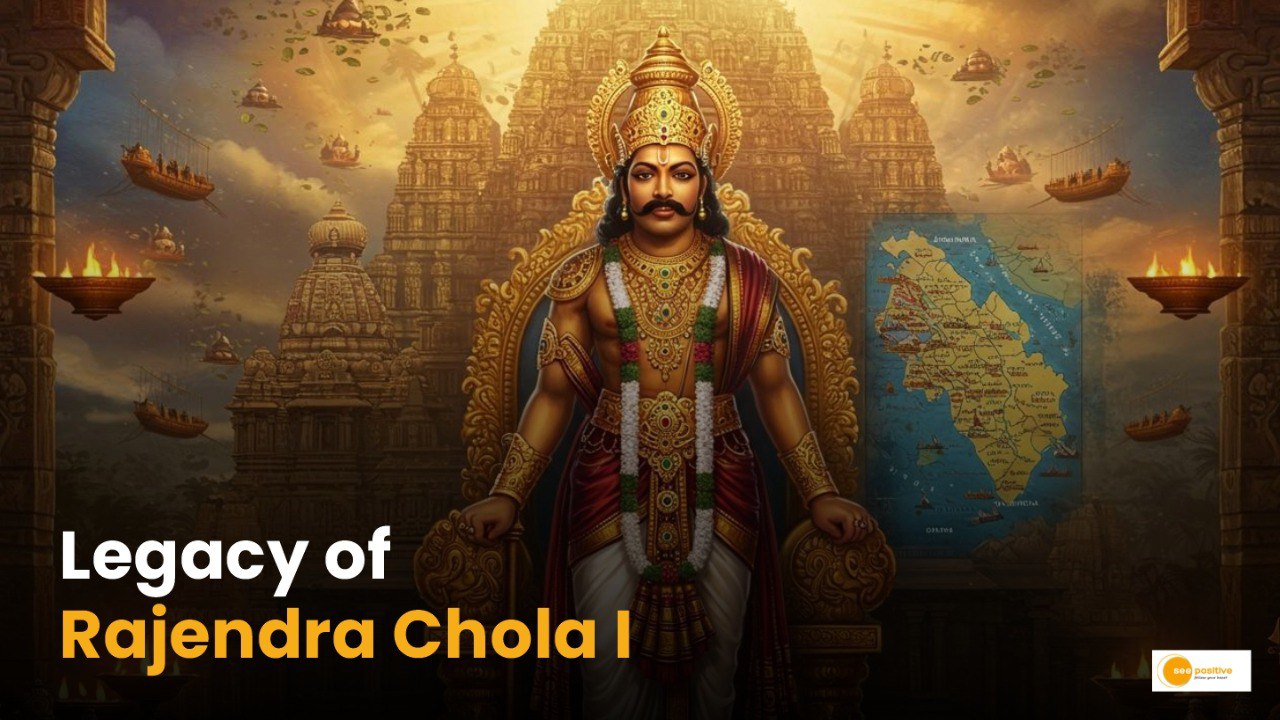In the Wake of Gangaikonda Cholapuram Celebrations
Rajendra Chola I: Prime Minister Narendra Modi visited Gangaikonda Cholapuram in Tamil Nadu recently. This was to mark the 1,000th birth anniversary of Rajendra Chola I. He was one of India’s greatest emperors—Rajendra Chola I. Participating in the Aadi Thiruvathirai festival, PM Modi paid tribute to the Chola king’s contributions to governance, architecture, and maritime dominance. The visit not only highlighted the region’s rich cultural legacy but also sparked renewed public interest.
Who Was Rajendra Chola I?
Rajendra I was the son and successor of Rajaraja Chola I, ascending the throne in 1014 CE. Under his leadership, the Chola Empire reached its geographical and administrative zenith. While Rajaraja laid the foundation of imperial expansion, Rajendra Chola transformed the Cholas into a formidable power—both on land and at sea.
A King Who Conquered the Ganges
One of Rajendra’s most iconic achievements was his northern military campaign up to the Ganges River in Bengal. After a victorious expedition, he brought back holy Ganga water in golden vessels and consecrated it in a temple tank at his new capital, earning him the title “Gangaikonda Chola” (The Chola Who Took the Ganges).
To commemorate this achievement, he established a new imperial city named Gangaikonda Cholapuram, which served as the Chola capital for over 250 years.
Builder of a Temple Marvel
Rajendra built the Brihadisvara Temple at Gangaikonda Cholapuram around 1035 CE, modeled on his father’s famous temple in Thanjavur. The temple features a 13-foot Shiva Lingam and a vimana (temple tower) standing at 55 meters—a remarkable architectural feat of the time.
Today, this temple is part of the UNESCO World Heritage ensemble known as the “Great Living Chola Temples.”
Maritime Power and the Southeast Asian Campaign
Rajendra Chola is widely celebrated for orchestrating one of India’s first overseas military expeditions. Around 1025 CE, he launched a powerful naval assault against the Srivijaya Empire—a Southeast Asian kingdom based in modern-day Indonesia, Malaysia, and Thailand.
His fleet attacked and subdued Srivijayan ports, asserting control over key maritime trade routes. This marked a high point in Indian naval history and helped Tamil merchant guilds like Manigramam and Ayyavole expand overseas.
Innovator in Governance and Water Management
Rajendra wasn’t just a conqueror—he was a forward-thinking administrator. His reign introduced sophisticated systems of local governance, including the Kudavolai voting system, where local leaders were chosen through a form of community ballot. PM Modi even referenced this as a form of early democratic practice, predating the Magna Carta by over a century.
He also engineered one of the largest water reservoirs of his time—the Cholagangam Tank—a massive irrigation tank that supported agriculture across vast regions. In 2025, the Tamil Nadu government approved a ₹19 crore plan to revive the ancient tank as part of heritage conservation.
Why Rajendra Chola I Matters Today
Rajendra Chola I was a monarch who seamlessly combined military might, cultural patronage, technological innovation, and democratic foresight. His campaigns connected India with Southeast Asia and his governance systems influenced generations of rulers.
As India revisits its civilizational past, Rajendra Chola I stands tall as a symbol of strength, strategy, and sophisticated statecraft—a king who not only ruled the land but commanded the seas.


